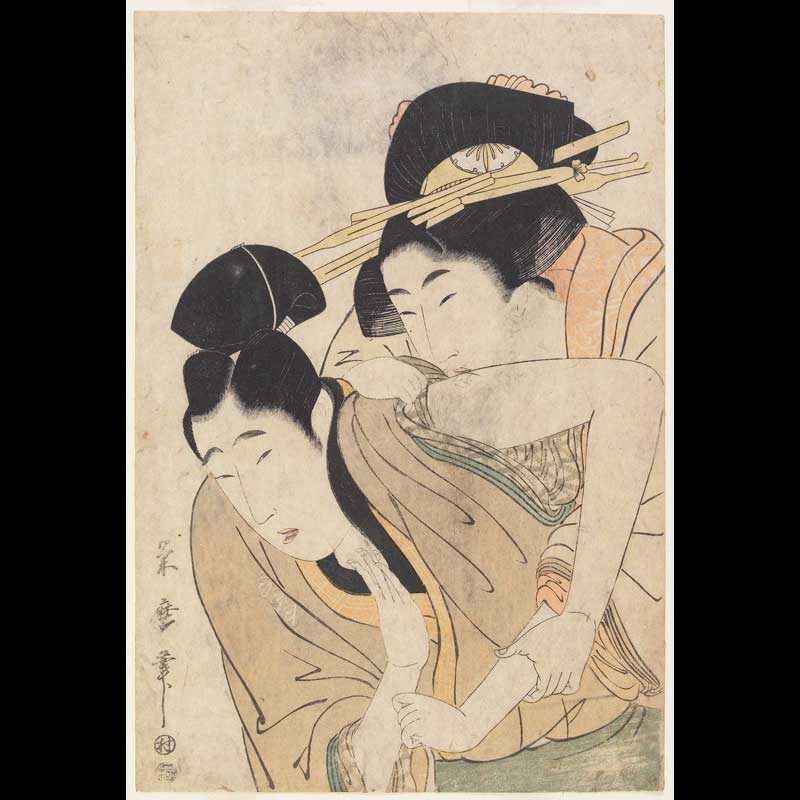No. 1: Nihonbashi
From the series Fifty-three Images of the Tōkaidō Road, 1847–52
Color woodblock print (nishiki-e)
Gift of Louis W. Hill, Jr. P.75.51.310
Cat. no. 231
The series Tōkaidō gojñsan zue (Fifty-three Images of the Tōkaidō Road) is popularly known as Bijin Tōkaidō (Beauties on the Tōkaidō) because it features full-length depictions of women. Each image pairs a woman with a landscape print. This compositional formula—treating the landscape as a discrete printed object rather than integrating the figure into it—explicitly reminds the viewer of Hiroshige’s fame as a landscape artist. With this view of Nihonbashi bridge, the starting point of the Tōkaidō road in Edo, Hiroshige depicted a chicly dressed woman—perhaps a geisha. Holding a letter, she glances toward a wooden box containing a large, whole fish colored the vivid blue of a katsuo, or bonito. Wrapped in sasa (bamboo grass) and boxed to keep it fresh, and perhaps accompanied by the letter, the bonito was likely a gift from a client or lover.

